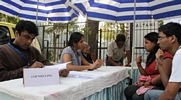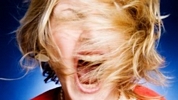The physiology of panic attacks hinges upon "The Fight or Flight Response", which Wikipedia defines as follows:
"The "fight-or-flight response", also called the "fight-or-flight-or-freeze response", the "fright, fight or flight response", "hyper-arousal" or the "acute stress response," was first described by Walter Cannon in 1929. His theory states that animals react to threats with a general discharge of the sympathetic nervous system, priming the animal for fighting or fleeing. This response was later recognized as the first stage of a general adaptation syndrome that regulates stress responses among vertebrates and other organisms."
However, most panic attacks occur in situations where the sufferer is in no danger whatsoever, (many people awake from their sleep and have a panic attack) so how is this "Fight and Flight Response" relevant?
It is thought that respiratory abnormalities may play a central role in the patho-physiology of panic disorder.
Gorman et al in "Arch Gen Psychiatry." 1988;45(1):31-39., subjected 31 patients with a history of DSM-III panic disorder or agoraphobia with panic attacks, together with a control group, with room air ventilation and 5% CO2 inhalation. Patients also underwent sodium lactate infusion.
Of the patients with panic disorder:
- 58% panicked with sodium lactate
- 39% with 5% CO2 (Panic with CO2 was associated with an exaggerated ventilatory response and increases in plasma norepinephrine (noradrenaline) level and diastolic blood pressure).
- 23% with room air hyperventilation
The results, suggest that patients may have hypersensitive CO2 receptors that, when triggered, evoke a subjective panic associated with an exaggerated ventilatory response and consequent hypocapnic alkalosis.
Laszlo A. et al found that Patients with panic disorder were more sensitive to the anxiogenic effects of CO2 than were normal subjects, and CO2 was a more potent stimulus to panic than hyperventilation. These results call into question the validity of having a person in the middle of a panic attack breath into a paper bag.
Despite the weight of evidence for an organic aetiology, many sufferers have found help in a technique developed by Barry, a former sufferer himself. This involves facing up to panic attack symptoms, indeed welcoming panic attacks.
The rationale here is that sufferers of panic attacks try to avoid situations which trigger attacks. e.g. crowded places, or perhaps public transport, as these are situations where it is difficult to "escape". They are also places of maximum embarrassment should a sufferer succumb.
So by facing up to the symptoms, the sufferer eventually realizes:-
- They are not going to die.
- They are not going mad......2 of the most common fears in such situations
For more information please visit Human Anatomy Physiology /



